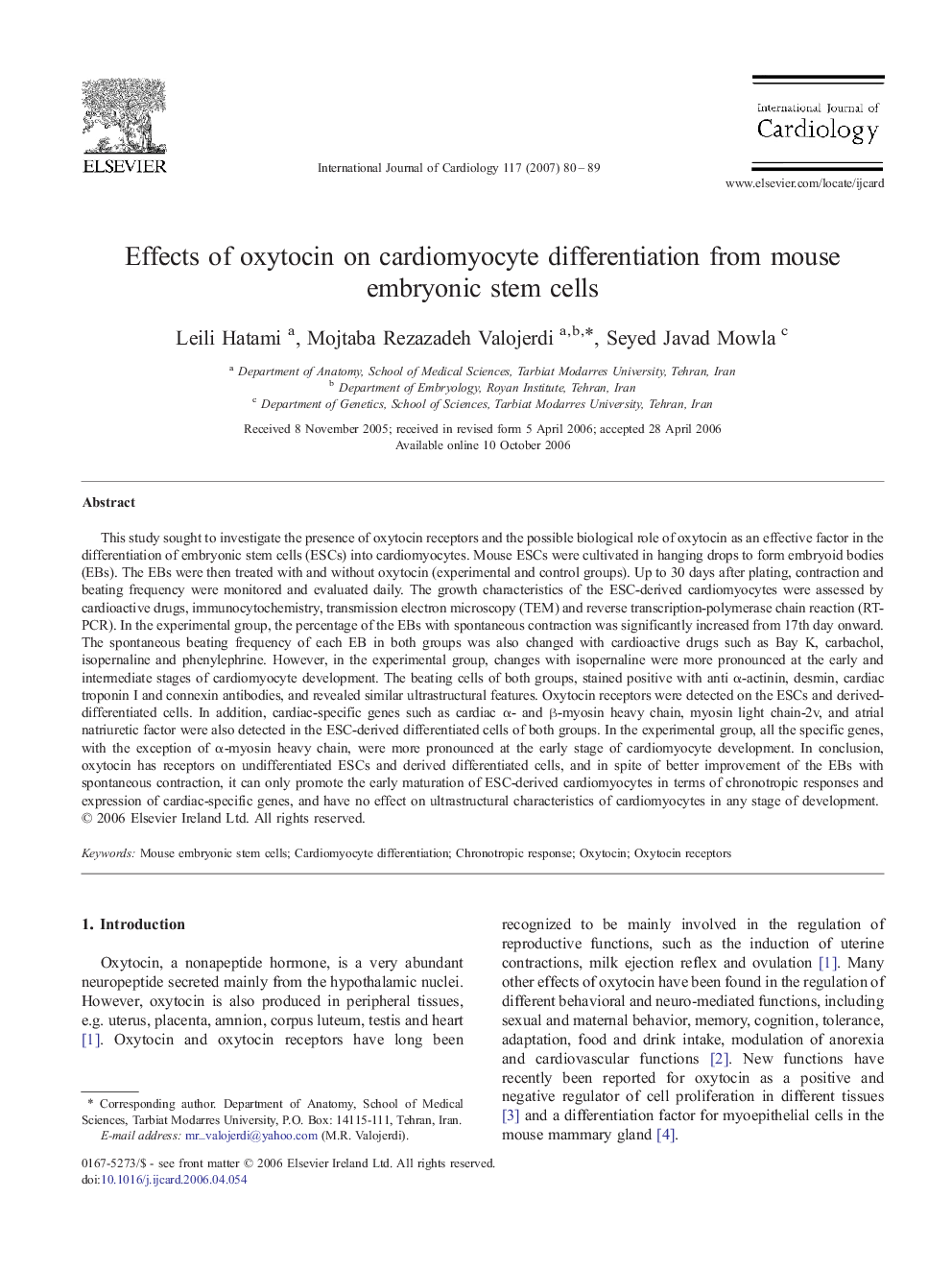| Article ID | Journal | Published Year | Pages | File Type |
|---|---|---|---|---|
| 2935090 | International Journal of Cardiology | 2007 | 10 Pages |
This study sought to investigate the presence of oxytocin receptors and the possible biological role of oxytocin as an effective factor in the differentiation of embryonic stem cells (ESCs) into cardiomyocytes. Mouse ESCs were cultivated in hanging drops to form embryoid bodies (EBs). The EBs were then treated with and without oxytocin (experimental and control groups). Up to 30 days after plating, contraction and beating frequency were monitored and evaluated daily. The growth characteristics of the ESC-derived cardiomyocytes were assessed by cardioactive drugs, immunocytochemistry, transmission electron microscopy (TEM) and reverse transcription-polymerase chain reaction (RT-PCR). In the experimental group, the percentage of the EBs with spontaneous contraction was significantly increased from 17th day onward. The spontaneous beating frequency of each EB in both groups was also changed with cardioactive drugs such as Bay K, carbachol, isopernaline and phenylephrine. However, in the experimental group, changes with isopernaline were more pronounced at the early and intermediate stages of cardiomyocyte development. The beating cells of both groups, stained positive with anti α-actinin, desmin, cardiac troponin I and connexin antibodies, and revealed similar ultrastructural features. Oxytocin receptors were detected on the ESCs and derived-differentiated cells. In addition, cardiac-specific genes such as cardiac α- and β-myosin heavy chain, myosin light chain-2v, and atrial natriuretic factor were also detected in the ESC-derived differentiated cells of both groups. In the experimental group, all the specific genes, with the exception of α-myosin heavy chain, were more pronounced at the early stage of cardiomyocyte development. In conclusion, oxytocin has receptors on undifferentiated ESCs and derived differentiated cells, and in spite of better improvement of the EBs with spontaneous contraction, it can only promote the early maturation of ESC-derived cardiomyocytes in terms of chronotropic responses and expression of cardiac-specific genes, and have no effect on ultrastructural characteristics of cardiomyocytes in any stage of development.
